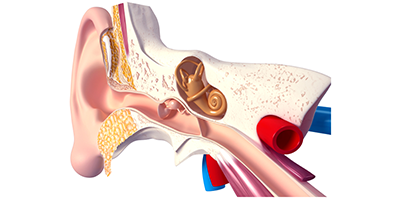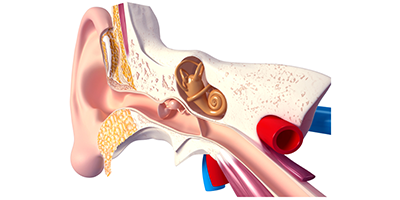An Ear for Sounds
The human ear has an impressive ability to tune into one voice among a multitude. It can follow the cello line in a symphony or eavesdrop on a conversation by filtering it out from the cacophony of a cocktail party. The complex process of listening is usually thought to occur in the auditory cortex, inside the brain. But a more recent view is that certain steps of perception occur at the peripheral auditory system: our ears. Now, a model developed in the group of Ruedi Stoop at the University of Zurich, Switzerland, provides new evidence that major aspects of sound separation and selection begin in the cochlea (the auditory portion of the inner ear), providing a prefiltering action that greatly simplifies the effort of listening.
As reported in the inaugural issue of Physical Review Applied, Stoop and his team describe the mammalian cochlea using a so-called Hopf model—a formalism often applied to explain the dynamics of biological oscillators, such as the hair cells that detect sound. They apply it to study how the ear targets a specific sound within a mixture of sounds based on its pitch, an attribute of sound related to its frequency content. The results suggest that “efferent” neurons (i.e., neurons carrying pulses from the central nervous system to the periphery) connecting to the cochlea’s outer hair cells can control a cochlear mechanism that realizes a frequency-selective gain-control. This may explain how the cochlea can enhance desired sounds, and suppress unwanted ones, in complex acoustic environments. – Matteo Rini





